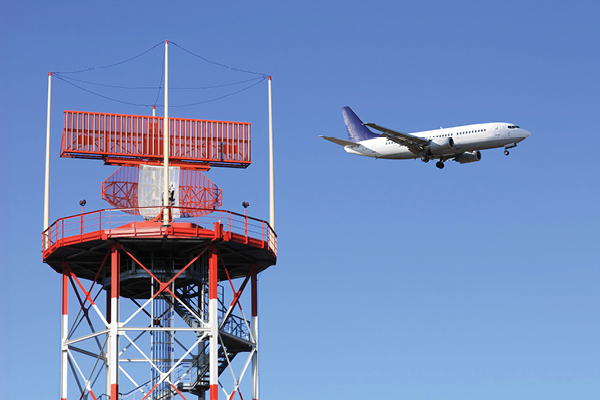Airspace Q3 2019 – Back to the Future
Far from being a redundant technology, radar will continue to be an integral pillar of ATM services for the foreseeable future.

Modern systems, such as automatic dependent surveillance – broadcast (ADS-B), are based on communication protocols. All commercial and most private aircraft are equipped with transponders that transmit information about the aircraft’s position and other relevant information for air traffic controllers.
“Newer technologies may indeed take the need away for ANSPs to keep primary radars for en-route surveillance purposes,” says Jan van Gent, Chief Operating Officer at Intersoft Electronics. “However, on airports you want to be 100% certain that there is nothing in the way of incoming or departing airplanes. We do not see a decrease in primary radars for airport surveillance.”
If that on-board transponder fails or is deliberately switched off – as has happened – there is no knowing where an aircraft is in the sky unless primary radar is deployed.
Primary radar works by sending out electromagnetic energy that reflects off any metal object and allows the user to see every flying object in the sky.
As van Gent succinctly explains: “Primary radar is the only technology that detects objects in the air that don’t want to be detected.”
This might be particularly important given the increasing use of drones. Drones are not equipped with transponders and drone operators who ignore or are unaware of the pertinent rules could manoeuvre their drones close to an airport, putting passenger aircraft at risk. Primary radar can detect these drones, after which the necessary search and counter-measure equipment can be deployed.
“Unlike electro-optic sensors, such as infrared and laser, primary radar is capable of operating at all times of the day and in all weather conditions,” says van Gent. “Primary radars also provide information on the environment such as adverse weather conditions.”
Wind turbines
But there are challenges to overcome. Radar is an old technology and many in service date from before the cell phone age. Interference problems from radio frequency (RF) pollution is therefore rife, not only from the growth in mobile devices but also from the cell towers that are needed for operating 4G / 5G equipment. Basically, the signal data processing element of radar systems is the first to age, much like any computer.
Less obvious is the issue of wind turbines. Due to the increase in demand for clean energy, wind turbines – both onshore and offshore – are increasing in number in many parts of the world. This demand has resulted in wind turbine heights increasing and wind farms creeping closer than ever before to airports and their radars.
“The towers and nacelles of modern wind turbines produce large reflections, many times larger than the reflections from aircraft,” van Gent informs. “These appear as large stationary objects which can degrade the detection and tracking of aircraft in the vicinity of the turbines and wind farms. This increases the workload of the air traffic controller.”
Moreover, the rotating turbine blades can appear as targets moving with a wide range of velocities simultaneously, rendering many of the current radar cancellation techniques ineffective.
Building blocks
Fortunately, solutions are at hand to give older radar technology a new lease of life. Evolving radio frequency environments, for example, are benefitting from advanced filtering technology that effectively cancels out the effect of RF pollution for primary radars.
Intersoft Electronics – which has been supplying radar test and analysis equipment for almost three decades – provides new processing technology to filter out the effects of wind turbines without deteriorating the detection capabilities of the radar system. “We have demonstrated our ability to effectively mitigate the effects of 225m high wind turbines as close as 5km from an airport radar,” says van Gent.
The company’s next generation signal processing (NGSP) platform is also the basis for a solution to anomalous propagation, where radar waves are deflected due to an unusual distribution in temperature and humidity in the atmosphere.
“The building blocks are there to make it easy to fine-tune radar systems,” van Gent sums up. “Because the fact is that primary RADAR will remain a critical component in ATM for the foreseeable future.”


